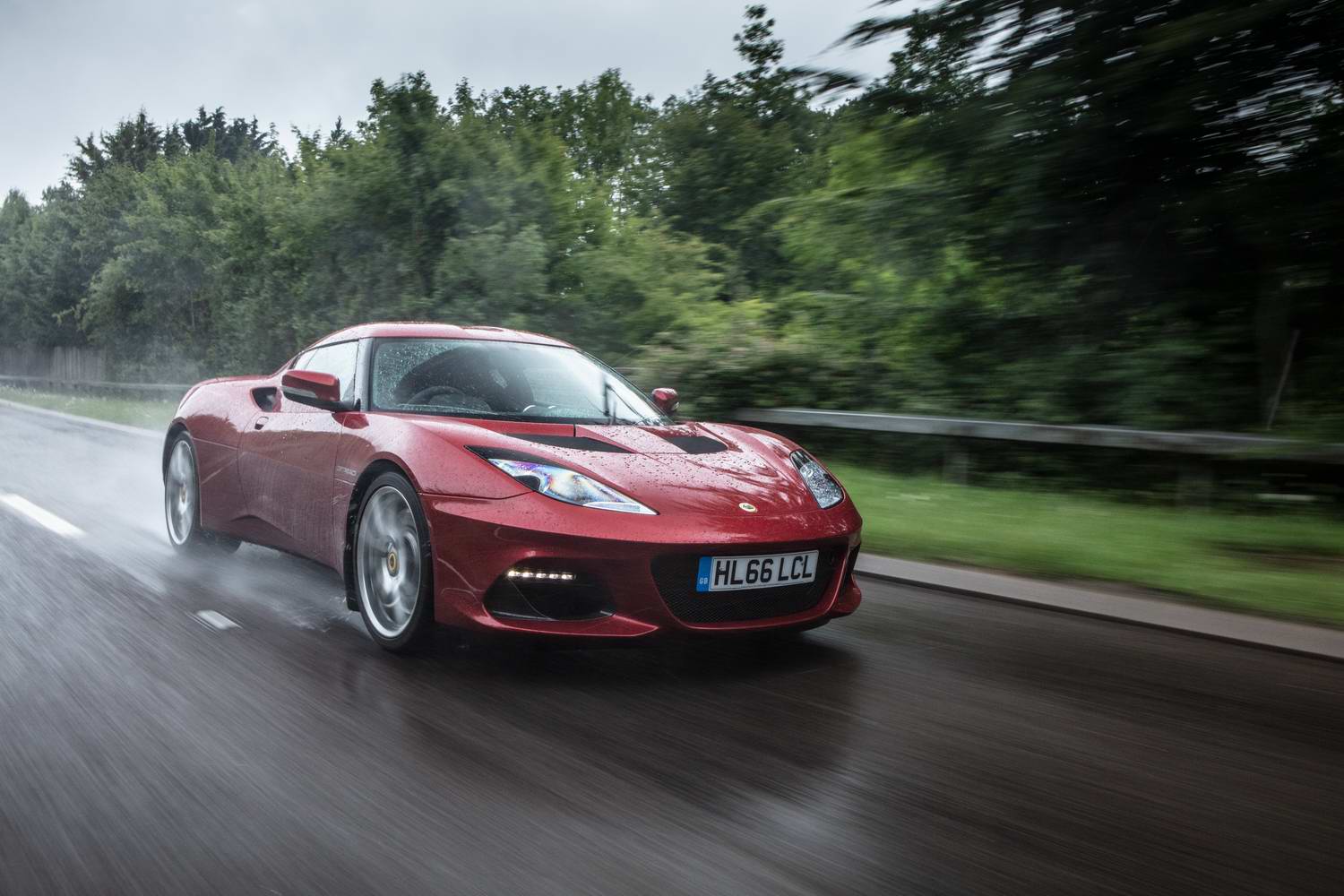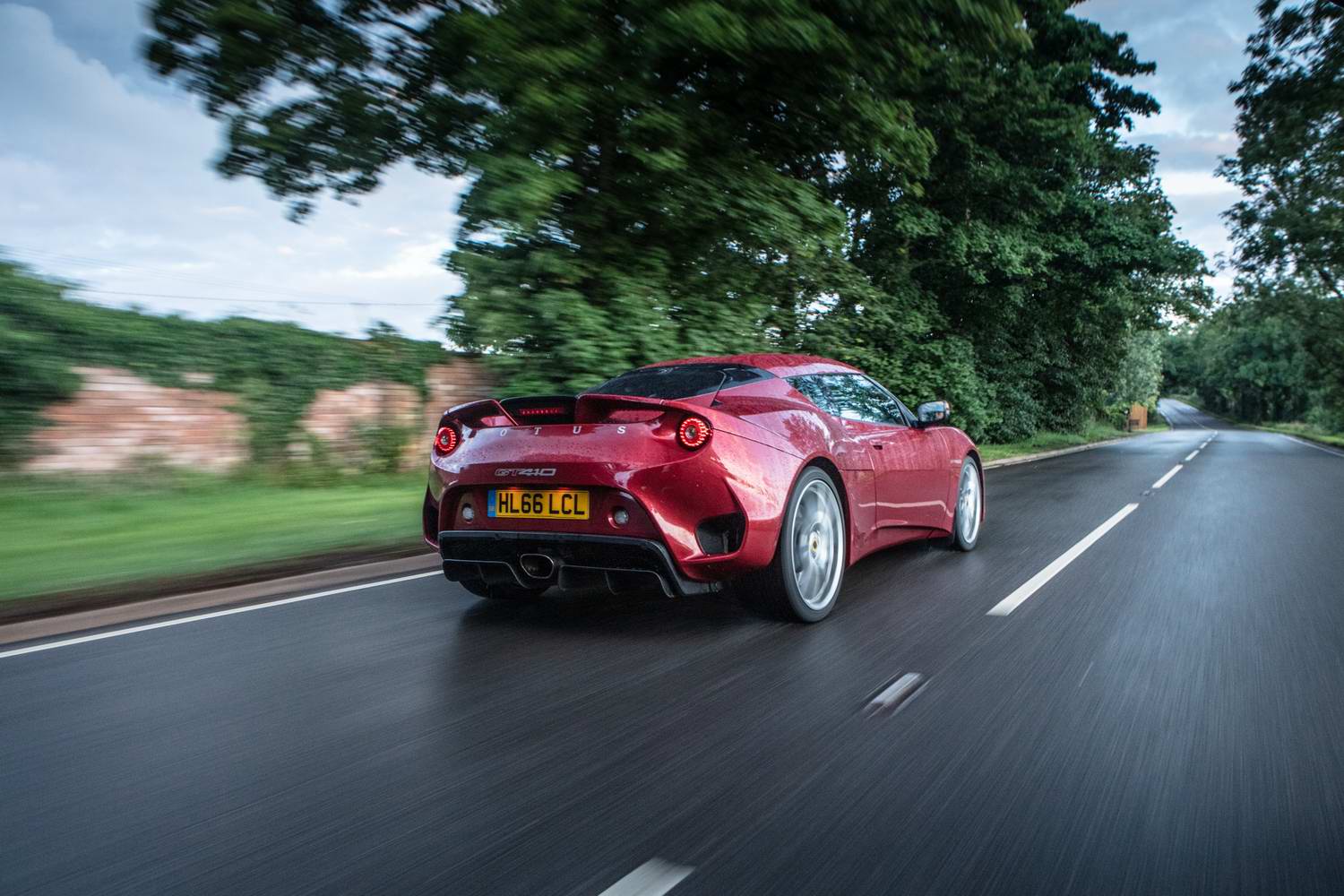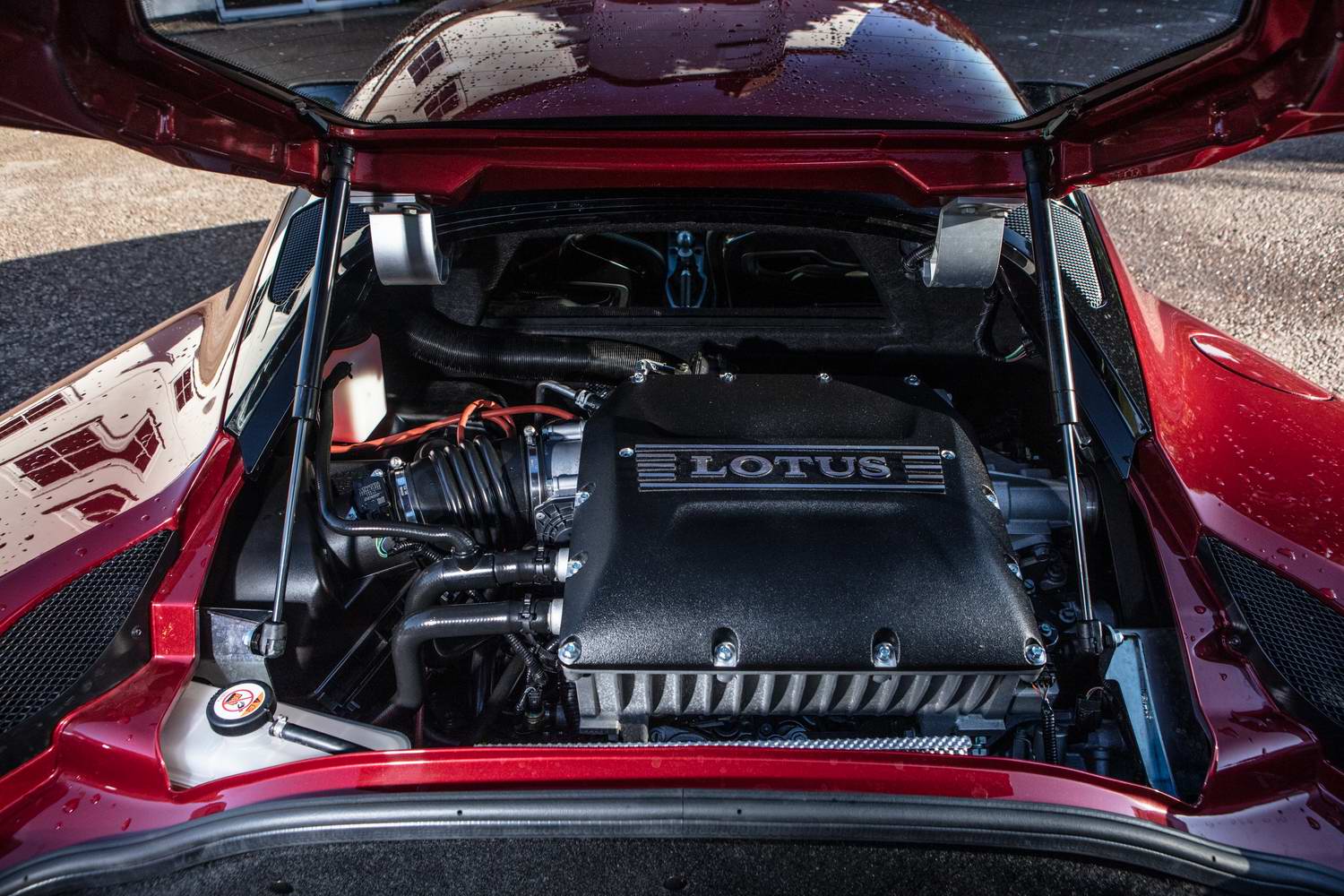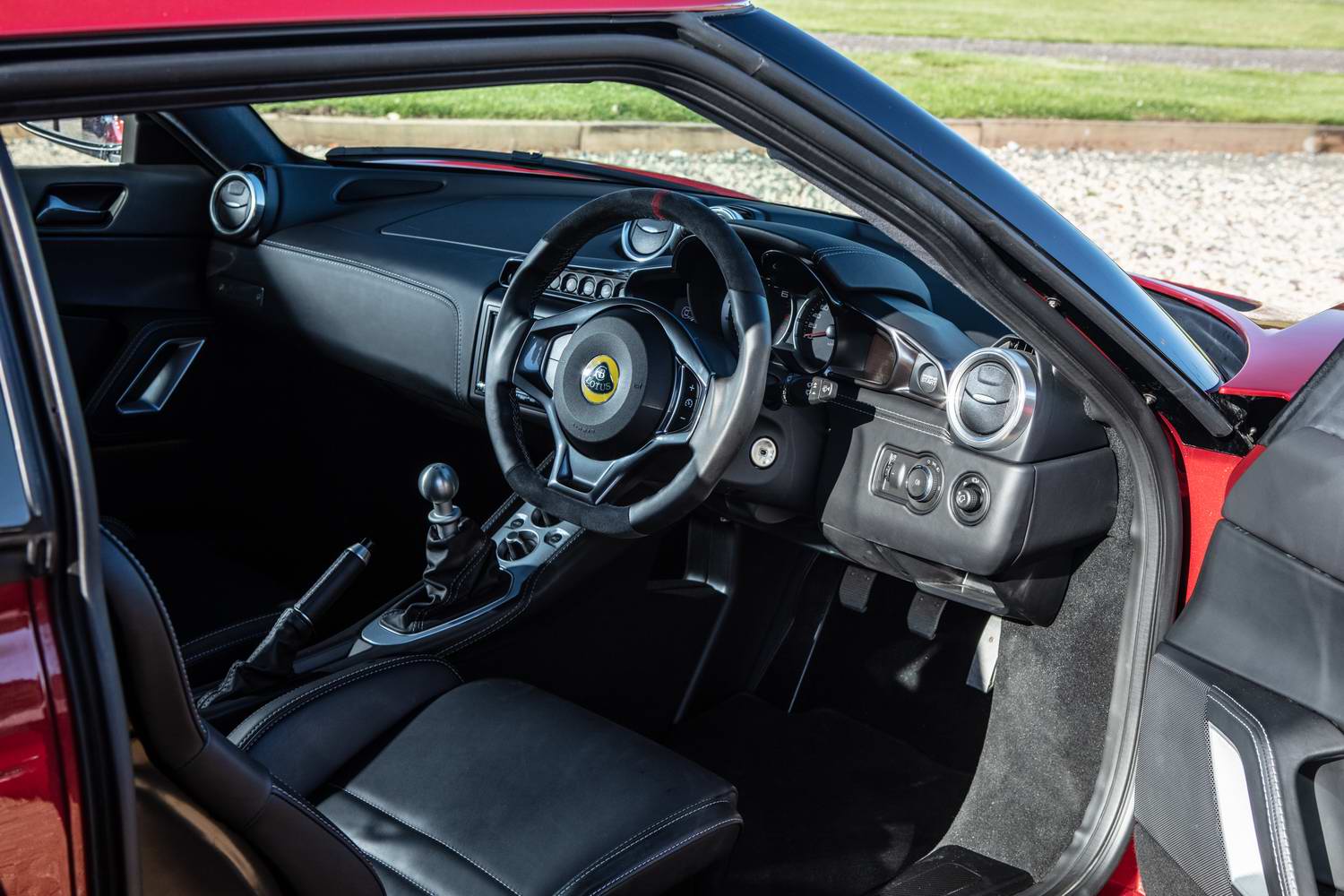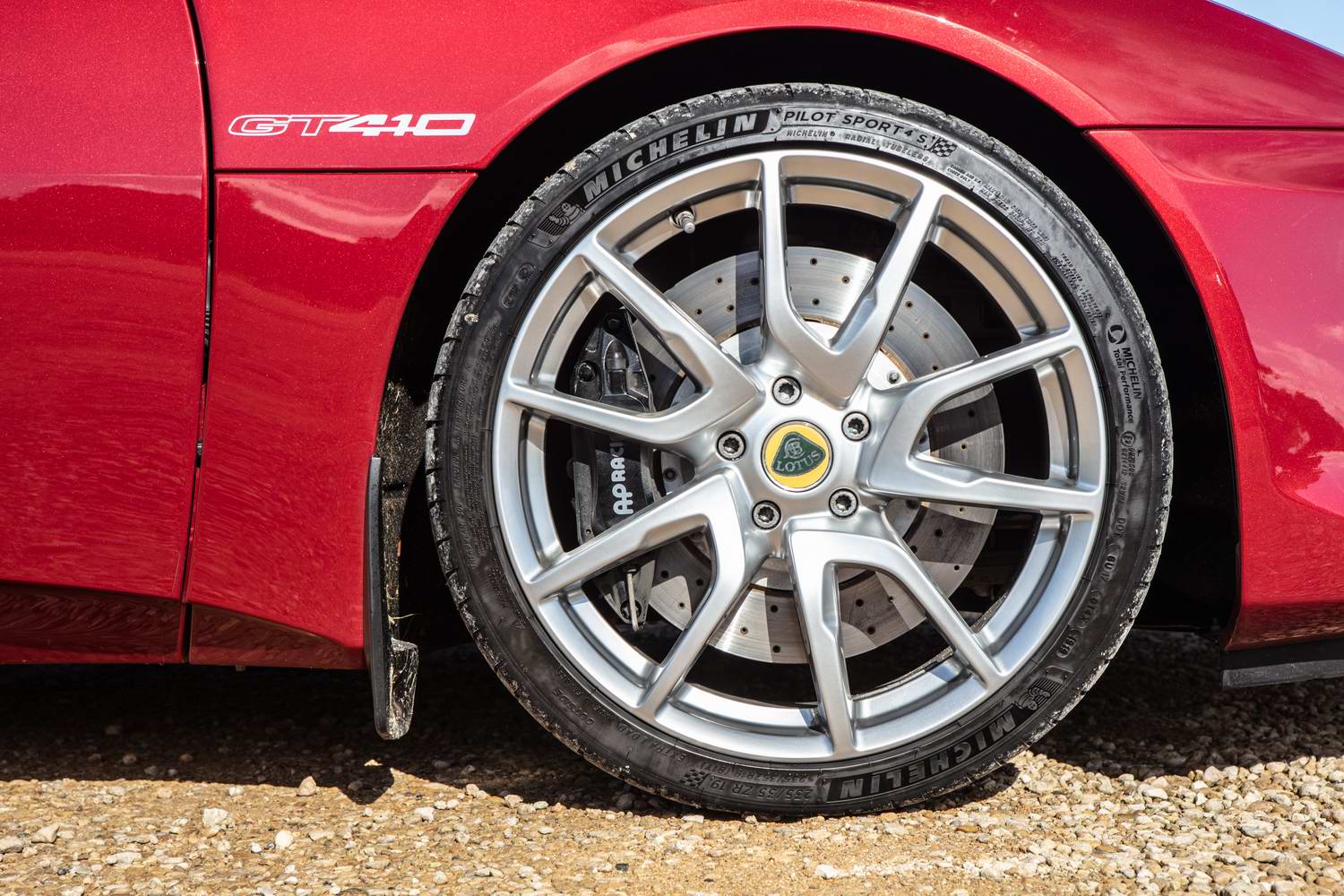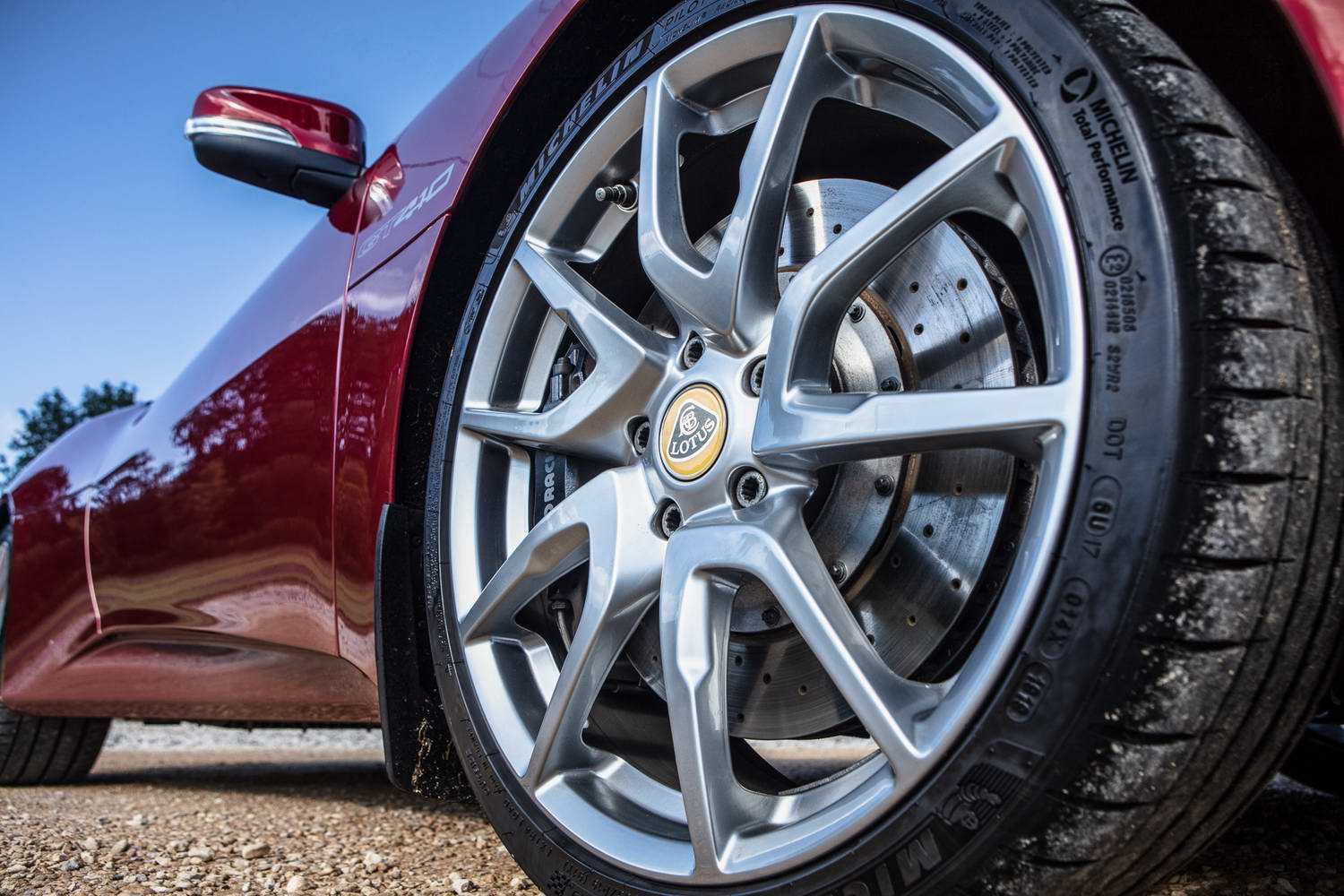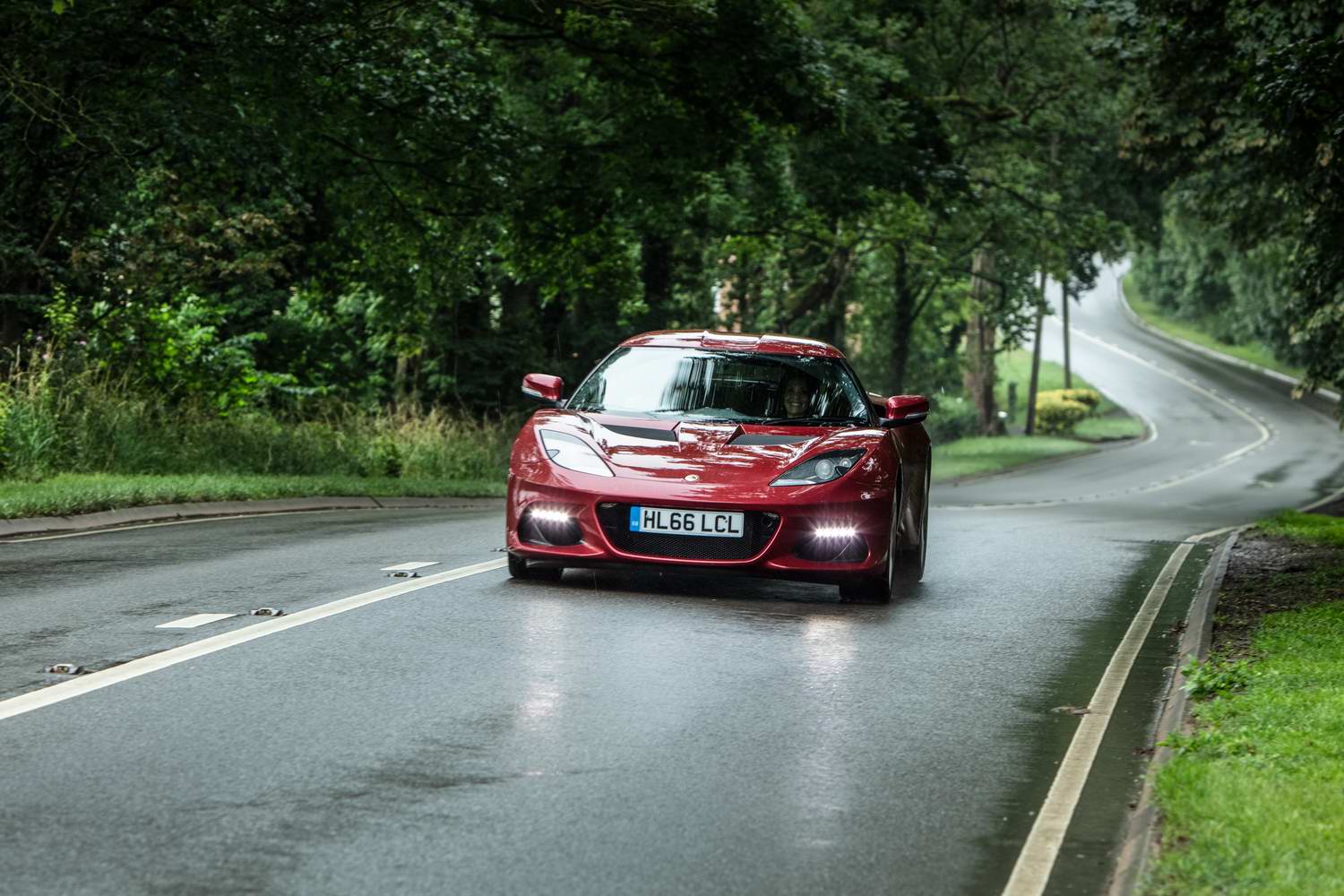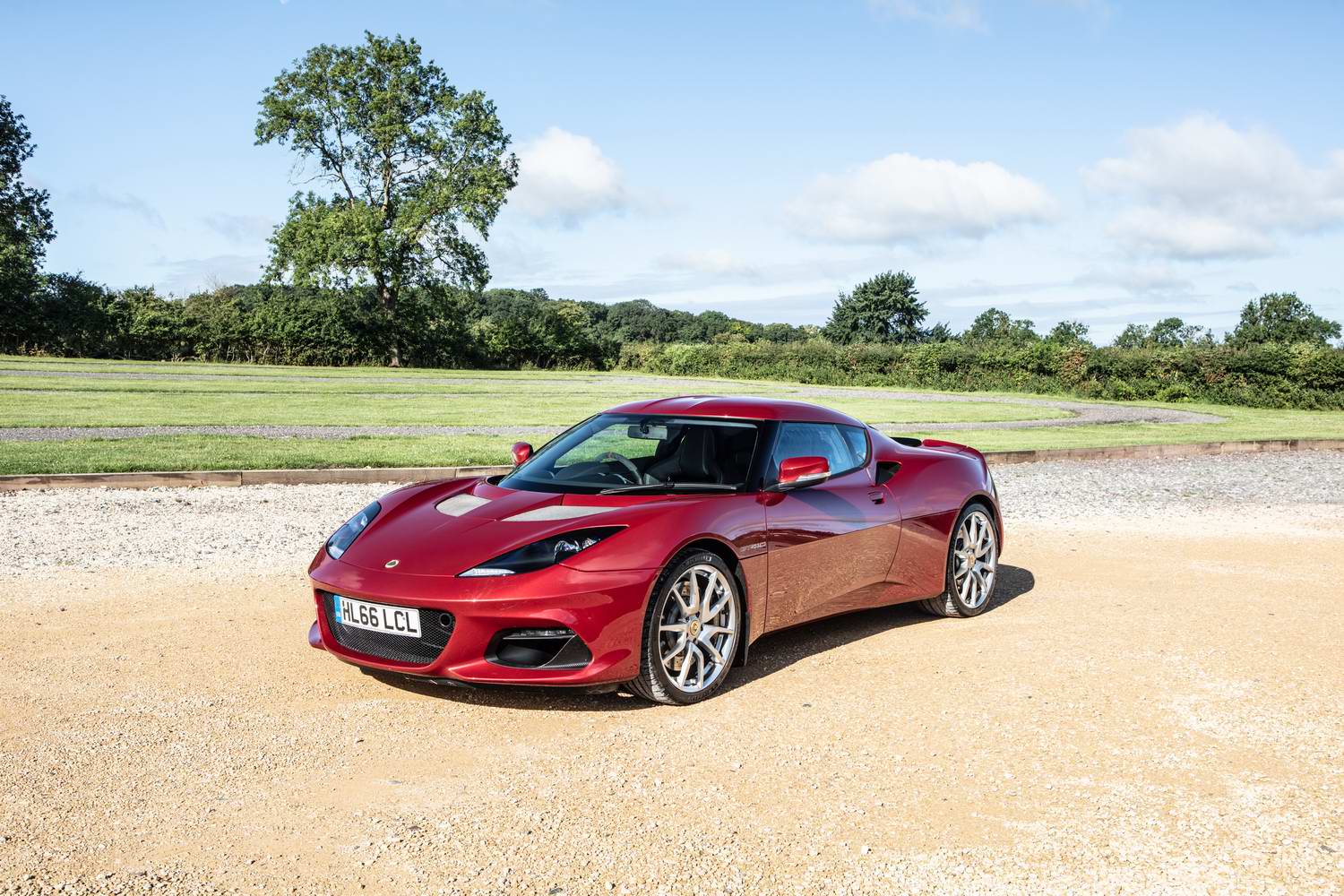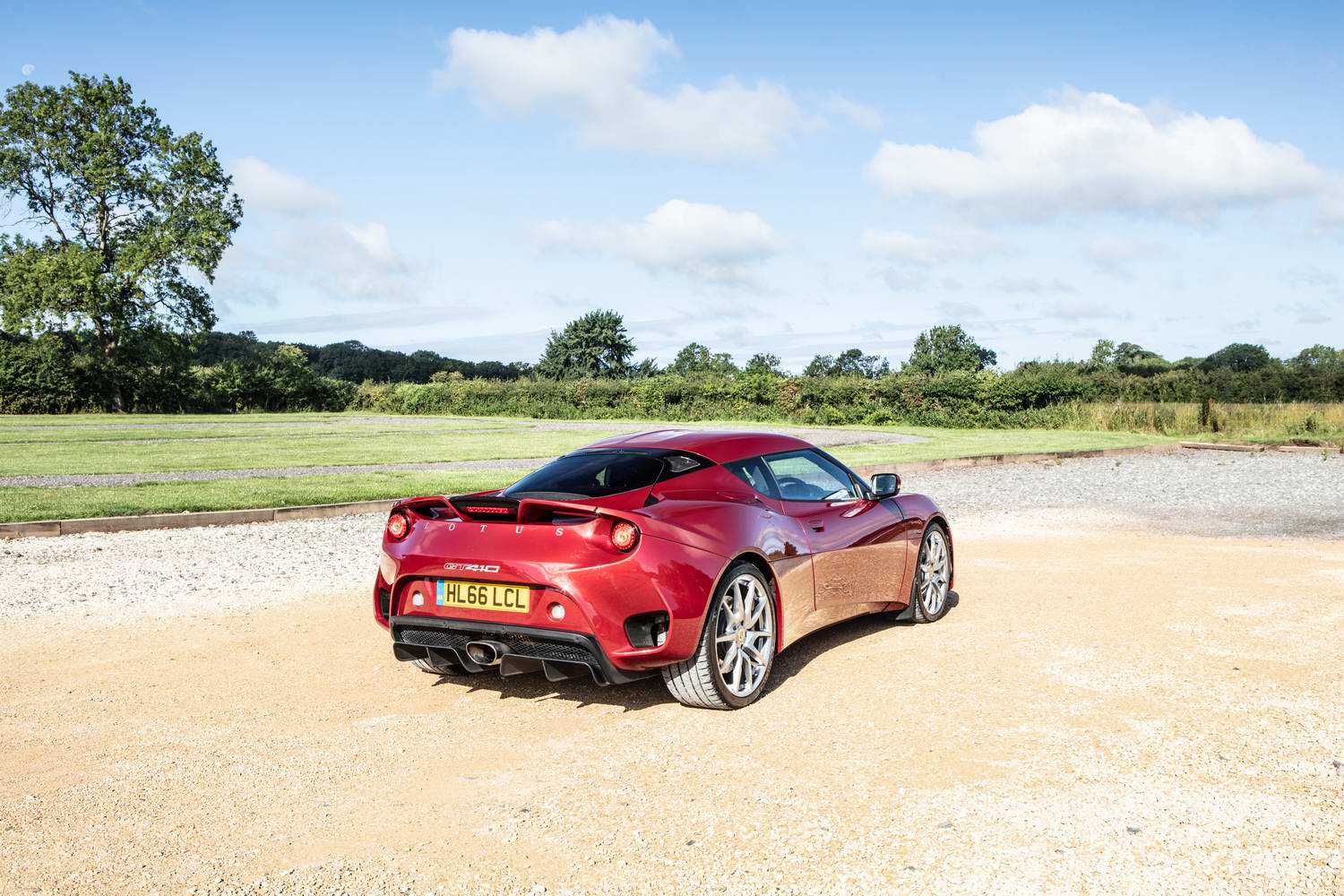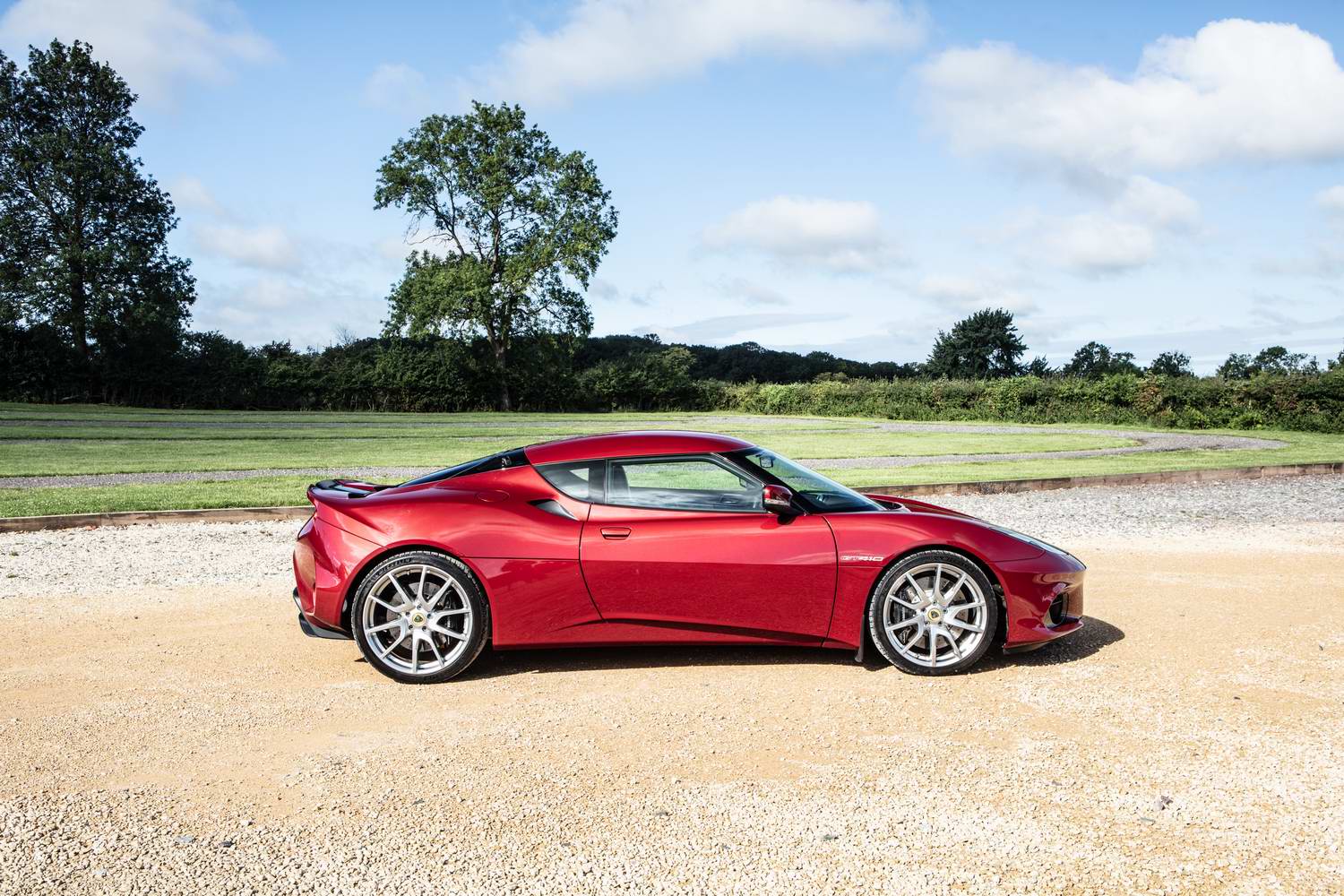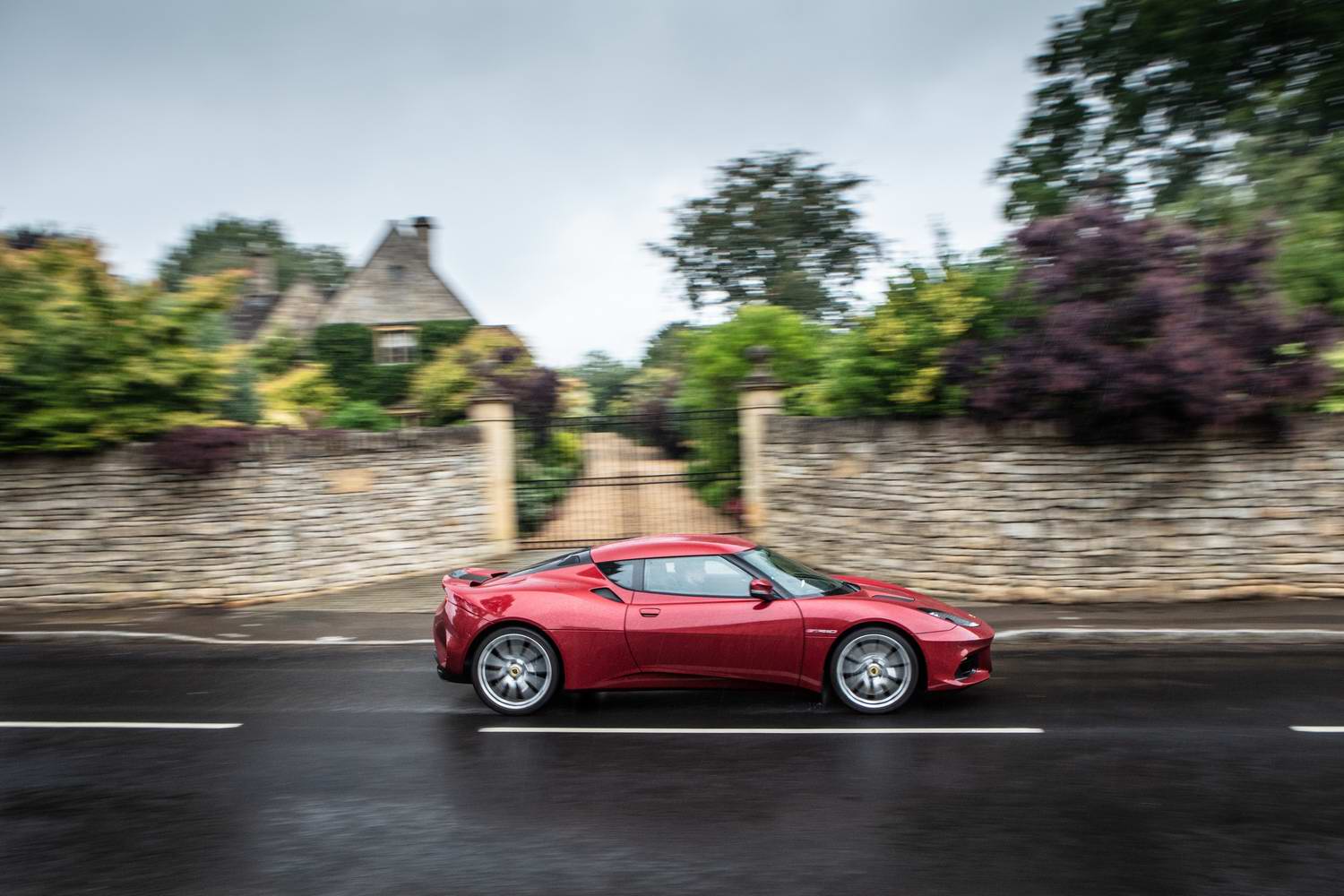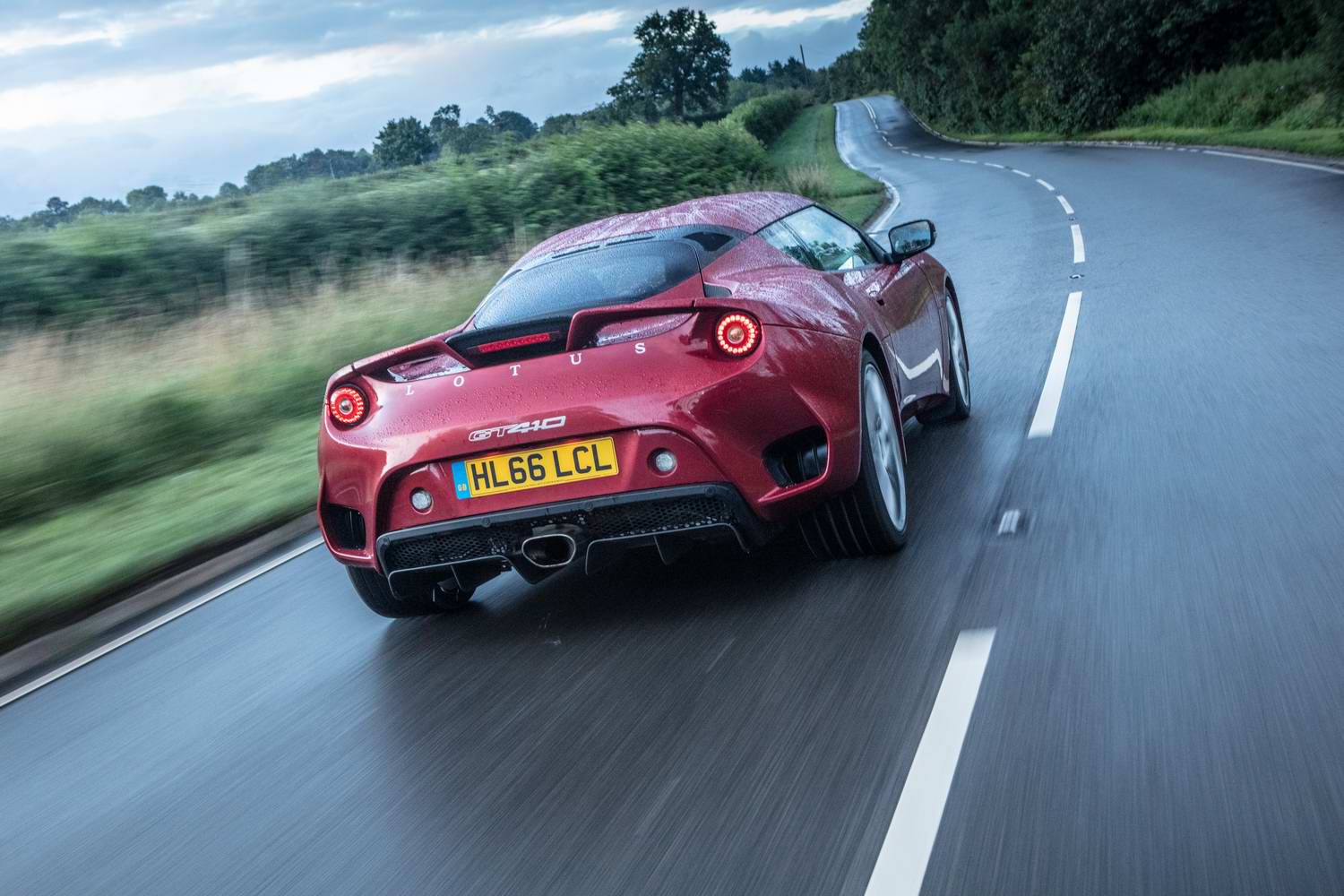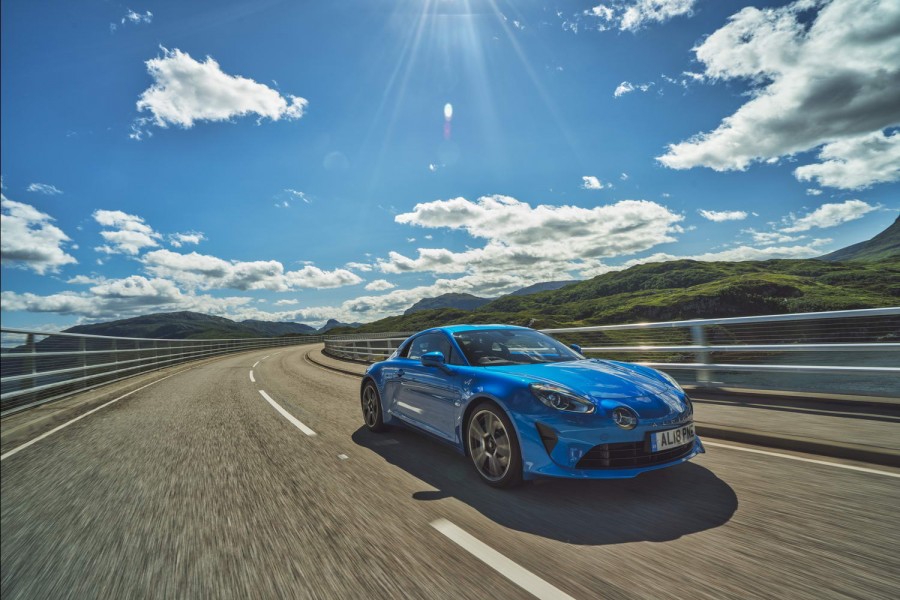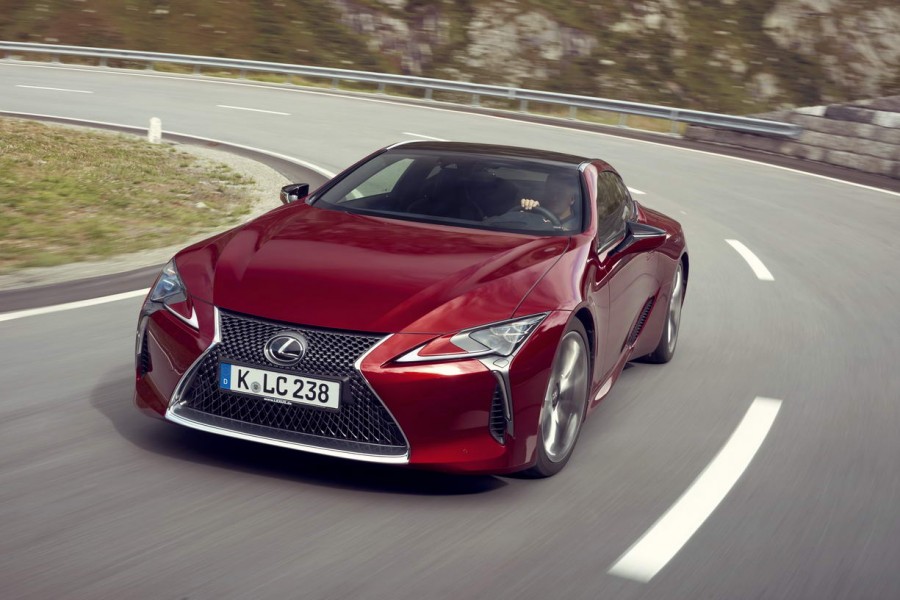As GTs go, even this improved, softened Lotus Evora GT410 remains compromised in several key departments. But you won't mind those minor drawbacks so much, when you've experienced what can only be described as this car's thoroughly magical ride quality...
In the metal
We've no real need to discuss the aesthetic aspects of the Evora GT410 in great detail here, because - last year - we drove a GT410 Sport and there's precious little difference between the two. The 'new' car has a larger rear glass area, to improve visibility out of the back of the Lotus for the driver, while its more comfort-oriented specification means it is less likely to have lots of external black detailing and track-biased addenda; indeed, the red car on silver wheels you can see in these images looks elegantly restrained and rather classy - even if we're still of the opinion that Lotus' insistence on making this a 2+2 (and we'd dearly love to meet the '+2s' who could even remotely fit into the second row of the Evora's cabin) spoils the car's appearance somewhat.
That comfort-biased ethos we mentioned pertains more to the Evora's interior, which still lacks for the sort of finishing that can even partway move the Lotus close to its key opposition in this regard, yet at least now there's more equipment for less outlay. Not only that, but there's increased sound-deadening around the GT410's cabin, when compared to the GT410 Sport, and the damping rates have been switched from European track-spec levels to US floaty-floaty specification. This might sound like a bad thing, on the face of it, but - as we shall come to see - it's really not. All in all, the Evora GT410 is, on the surface, barely changed at all. So, if you liked it as a 2019 Sport, you'll like it as a 2020 non-Sport too.
Driving it
The ride quality in this Evora is out of this world, it truly is. Quite how a company that puts its cars together in a small, inconspicuous factory in the relatively remote, rural East Anglian region of the UK can, time and time again, come up with suspension that utterly shames some massive multinational conglomerates operating on R&D budgets about twelfty-billion times the size of Lotus' repository of funds is beyond us. But here's another mesmerising effort; and, arguably, Lotus' finest work yet. Which is some startling and scarcely believable accolade to fling this Evora's way, we don't mind telling you.
Remember, Lotus doesn't run with adaptive dampers this and twin-axle air springs that and active anti-roll bars a-go-go, instead operating on another plane of genius with different shims for the plain old oil-reservoir shock absorbers, which are coupled to prosaic steel coilovers. The anti-roll bars are just that - inert bars of metal, bolted to the car to try and stop it leaning too much. It's all so simple. It's all so primitive. It's all so flippin' fantastic.
We want to use adjectives like 'fluid' and 'loose' to describe the way the Evora GT410 eases its way across any road surface it encounters, but that would somehow suggest there is something ill-resolved and sloppy about this coupe's chassis, and such an implication could not be any further from the truth than if it wheedled its way out of the stupid, flappy gob of perma-orange Donald Trump. This car, this mid-engined car, this mid-engined sports car, this mid-engined sports car from a teeny-tiny cash-strapped concern that's sited on the edge of a sleepy market town where nothing much ever happens, rides with a wondrous, civilised good grace and genteelness that eludes some luxury saloons packing all the advanced chassis hardware technology in the world.
And so you spend the first ten kilometres or so driving along in a state of dazed stupefaction, wondering if someone has bolted the bodywork of a Lotus to the underpinnings of an air-sprung Mercedes S-Class by mistake. Honestly, if a GT is quite literally a grand tourer, or - put another way - is a car to do vast, cross-continental distances with supreme ease, then we can't think of much else we'd pick ahead of the Evora GT410 in which to do a thousand-kilometre slog. It is so unexpectedly quiet, comfortable and benign that it relaxes you thoroughly from the first instant you roll off in it.
Yet it sacrifices none of the Lotus wonder when it comes to handling. Its 416hp mid-mounted V6 sounds terrific all around the rev counter, if not quite as loud and as spine-tinglingly intoxicating as the same engine installed in the rawer Exige, and it offers incredibly strong and linear performance up to the 7,000rpm redline. The engine is mated to a six-speed gearbox (no exposed linkages here, though, sadly; this is a GT, not a track-day special) with a genuinely excellent throw, all mechanical of feel and positive in action. Furthermore, because the Evora is well below the 1.5-tonne threshold, the brakes have real bite and stamina, while the glorious comfort suspension comes into its own when you up the pace, summoning up solutions to extreme body movements that you didn't think would be possible. And while this is the only power assisted steering set-up in the current Lotus pantheon, the hydraulically-boosted system retains a level of feedback, feel and perfectly weighted directness that 99 per cent of other modern cars would kill to have.
Yep, the Evora GT410 is a sublimely delicate grand tourer and a talented sports coupe, all rolled into one package. Quite remarkable, when you think in more detail about the high-wire kinematic balancing act that Lotus has achieved here, isn't it?
What you get for your money
Lotus has added more equipment to the standard specification of the GT410 - such as an uprated touchscreen sound system with Apple CarPlay connectivity, a reversing camera with rear parking sensors, air conditioning, cruise control, heated Sparco sports seats, armrests on the doors and all-weather Michelin Pilot Sport 4S tyres (instead of circuit-focused Cup 2s) - for a price that's around €5,300 less than the GT410 Sport, which continues alongside the latest addition to the Evora range.
This is good news, although you still have to put up with column stalks and associated switchgear from a mid-2000s Ford, an instrument cluster that is vaguely kit-car-ish in appearance, some questionable surface materials in places and those aforementioned, laughably unusable rear 'seats' for a price tag that is broadly analogous to the starting ticket for a 992-series Porsche 911. Clearly, the Lotus' finishing is nowhere near such lofty Germanic standards, but conversely its cabin is not entirely unpleasant on the eye and it's super-comfortable to sit in, with good visibility out to the front and sides of the car.
Summary
What you are paying for in the Lotus Evora GT410 is not the sort of flawlessly finished premium product that you'd get from a much larger car company; if this machine has any notable issues, it's that the cabin quality is just not going to cut it with a discerning clientele that's capable of spending €150,000 on a set of wheels, while the outside of the Evora is not the prettiest piece of car design that has ever seen the light of day.
No - what you're paying for here is a standard of chassis know-how that is unmatched in the automotive industry. Don't focus on what the Evora's lower transmission tunnel plastics feel like when you scratch them with your fingers, as that's missing the point entirely. Instead, focus on how the Evora makes you feel when it is effortlessly soaking up the most craggy and appalling of road surfaces with an imperious disdain that wouldn't disgrace a Rolls-Royce; marvel at how it preserves all of Lotus' enviable sports car and competition DNA in a vehicle that is designed for comfort first and foremost; revel in the fact that, if you buy one of these things, then you've just purchased one of modern motoring's best-kept and most edifying secrets. The GT410 might not be perfect, critically speaking, but it's an astounding piece of dynamic engineering nonetheless.

